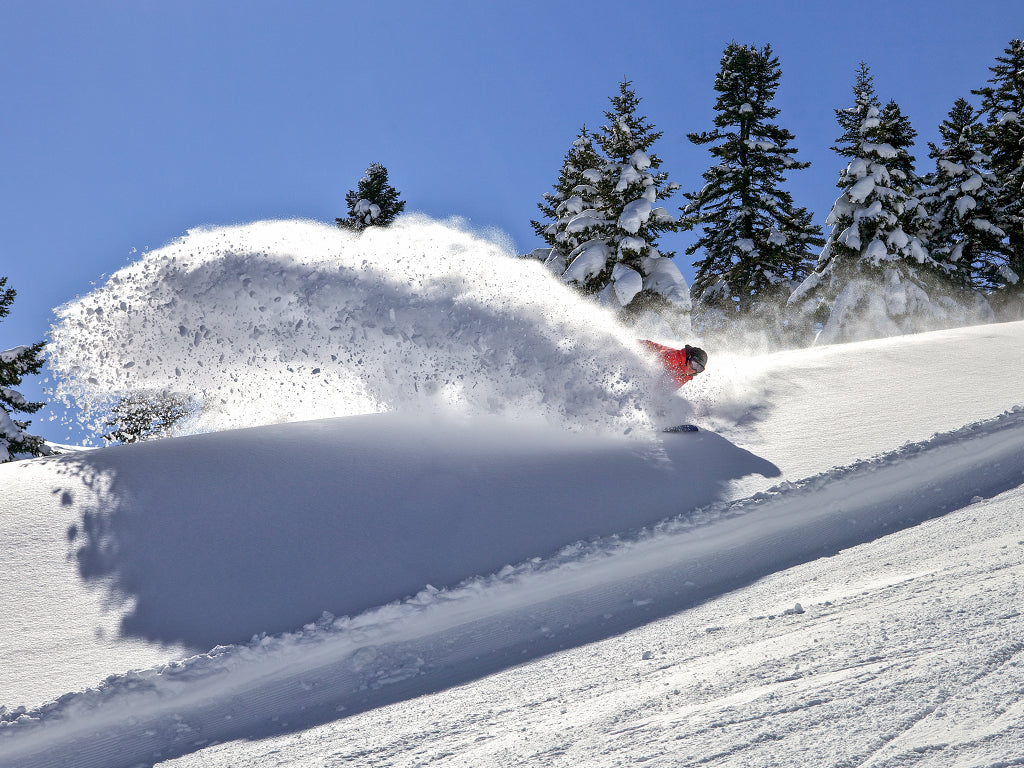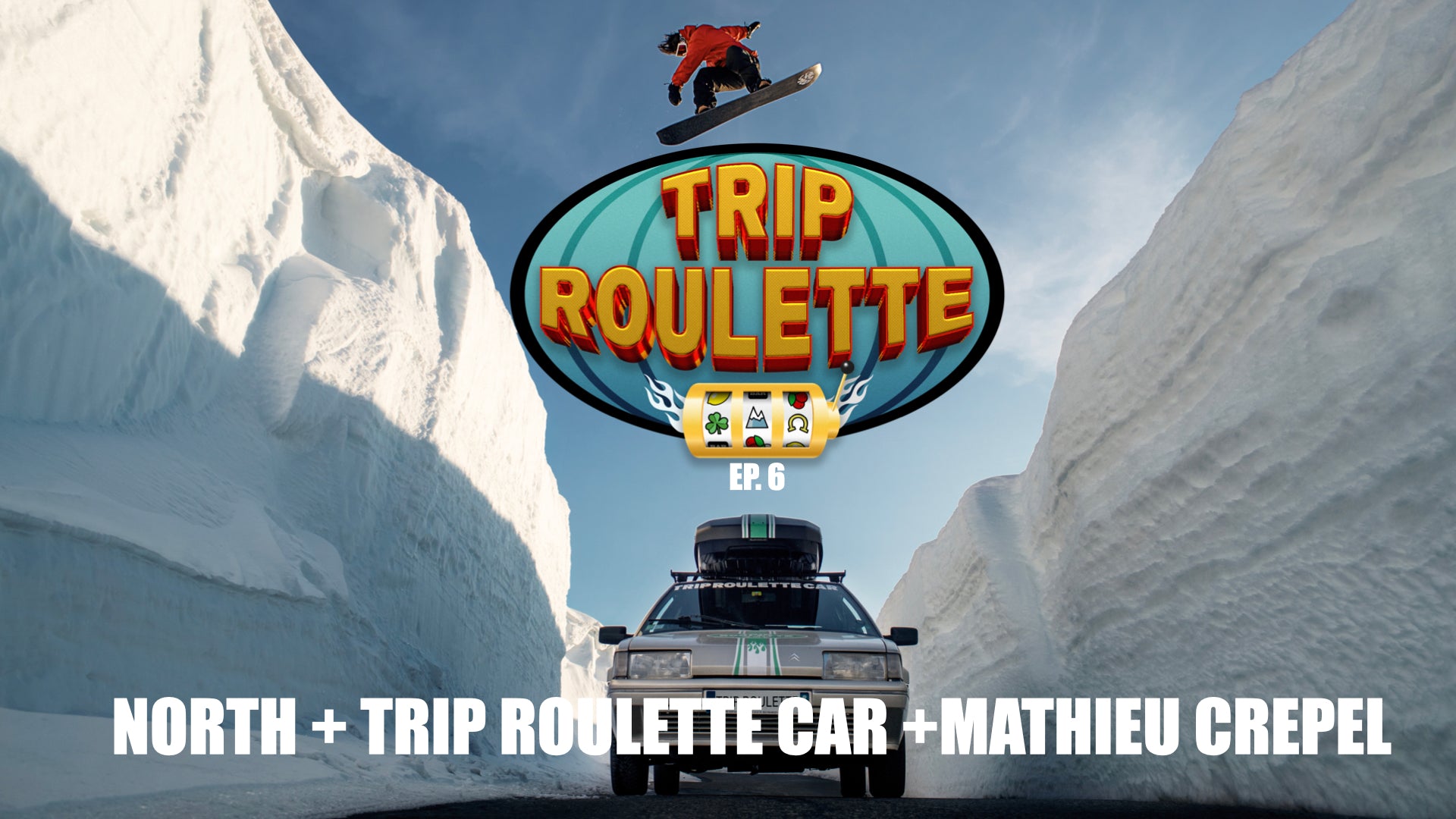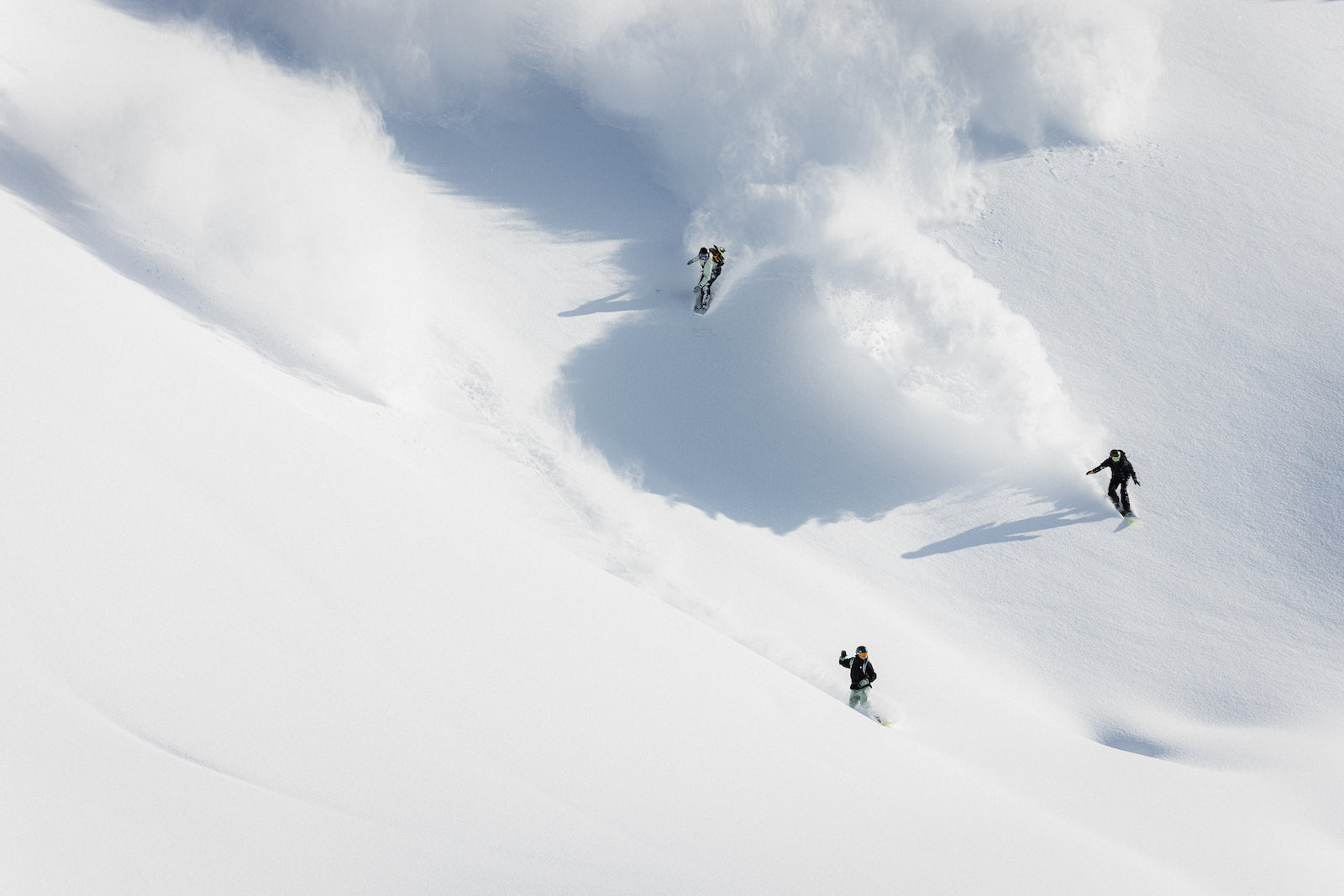Nidecker Serves up a Slice of Japan
Words & Photos: Ed Blomfield
It’s on a chairlift in Niseko that the penny drops. Looking down, I spot a Japanese guy learning to snowboard. Back in Europe, beginners typically skid gently across the slope. Just a second or so at the end of each sketchy traverse will be spent nervously engaging their edge. But even though this guy clearly couldn’t link turns, he was carving. Or at least, he was fully committing to a rail and drawing fast, clean lines through the sidecut – only to faceplant at the end of each arc because he didn’t know what to do next. No falling leaf. No speed checks. It was a whole other way of learning.

Japan is funny like that. It’s a parallel universe where people have figured out different solutions to the same problems. Knife and fork? Chopsticks. Bed? Futon. Bog roll? Electric toilet with retractable ass spray. Alphabet? Kanji. Pasta? Ramen. Salt? Soy. Left and right? Right and left (migi hidari). From time to time, the Japanese will see something cool for which they have no equivalent, and in amagpie fashion they’ll do the exact same thing themselves – but better. Like motorbikes, or pizza*, or whiskey (sorry Scotland, but the best ‘scotch’ I’ve ever drunk was an 18-year-old blend from Suntory).
Take it, study it, perfect it.
So it is that the local snowboarders have taken the humble edge change and elevated it to an artform. Not just pow turns, either. I mean sure, the insanely deep conditions on Hokkaido and Honshu have bred an army of powder samurai that regularly melt our social feeds (I’m looking at you, @forestlogd) and spawned a whole ecosystem of artisan board shapers. But what’s less well known is that outside of the coldest couple of months, Japan’s snow can be pretty mediocre – and without a shit ton of fresh, so can many of its mountains. At such times, the locals dive deep into flatland butters instead, or slice up pipe transitions; they surf the wave-like berms at Happo Banks, or host full-on banked slalom events like the annual gathering of the clans at Tenjindaira. In short, The Land of the Rising Sun is also the spiritual home of the turn, a place where a good heelside carve is held in the same esteem as a solid cab 5 back in Europe and America. Heck, they even have turning competitions judged purely on aesthetics.
 All of which explains why, when filmmaker Sam McMahon set out on an unusual mission to shoot a season-long project focused more on the ground than the air…
All of which explains why, when filmmaker Sam McMahon set out on an unusual mission to shoot a season-long project focused more on the ground than the air…
A little background. Over the last decade, Morzine-based Sam has documented the carving renaissance on this side of the world. It’s hard to believe now, but for the longest time after freestyle took off in the 90s and 2000s, the ‘Euro carve’ pioneered by the likes of Serge Vitelli and Regis Rolland was relegated to kook status. Little more than a retro party trick. Then, as a generation of riders outgrew the park and the pendulum of board trends swung back from skate-style twin tips to surf-inspired directional shapes, carving made its comeback. Suddenly, social media was awash with relatable edits from the likes of Yawgoons and Yearning For Turning. Sam’s own contribution to this movement was the Nidecker video series Slice ‘n’ Dice, starring British rippers Lewis Sonvico and Dave Crozier, whose high speed synchronised stunts in and around the piste proved what the Japanese knew all along: you don’t need kickers or rails to get creative. Just ollie high, and carve low.
Sam’s latest movie, Left Right, aims to go deeper under the skin. It’s less about pure spectacle, and more an exploration of the whole concept of edge control. “Snowboarding has become so broad in the last 10 years, with its many tribes” he explains to me, “but the one thing that does connect everyone is turning.”
 Joining us in Hokkaido was one half of the Slice ‘n’ Dice duo, Lewis Sonvico. Lewis is the Obi Wan Kenobi of British snowboarding. A long time ago in a galaxy far, far away (read: Reading) young Lew was a park padawan whose clear talent saw him fast-tracked onto the Olympic programme. But he turned away from the competitive dark side, retreating instead to the wild bosom of the backcountry. As an instructor, Master Sonvico has taught BASI students, the armed forces and other would-be carving Jedi. He disappears regularly to China. And for the past few years, he has been almost completely off-grid in the Dordogne, studying forestry and smoking the local vegetation almost as fast as he can plant it. Nonetheless, for the lead role in a film about turning, this unlikely hermit is our only hope.
Joining us in Hokkaido was one half of the Slice ‘n’ Dice duo, Lewis Sonvico. Lewis is the Obi Wan Kenobi of British snowboarding. A long time ago in a galaxy far, far away (read: Reading) young Lew was a park padawan whose clear talent saw him fast-tracked onto the Olympic programme. But he turned away from the competitive dark side, retreating instead to the wild bosom of the backcountry. As an instructor, Master Sonvico has taught BASI students, the armed forces and other would-be carving Jedi. He disappears regularly to China. And for the past few years, he has been almost completely off-grid in the Dordogne, studying forestry and smoking the local vegetation almost as fast as he can plant it. Nonetheless, for the lead role in a film about turning, this unlikely hermit is our only hope.
 The Baby Yoda to our rebel alliance is Kaori Terabayashi, a wide-eyed girl from Sapporo who leaves chaos and laughter in her wake. She speaks English in broken giggles, rides aggressively posi-posi binding angles, and was discovered by Sam a couple of years ago in the hashtag backwaters of Instagram. Promptly hooked up by Nidecker and whisked over to Europe for their annual team week, Kaori spent the first two hours of that trip – after a 14 hour flight – marvelling at the alien Swiss landscape outside the car (and presumably making the occasional grab for the gear stick); then she turned to Sam, genuine confusion writ large over her face like a human emoji, and said: “Samo-san… why… I here?”
The Baby Yoda to our rebel alliance is Kaori Terabayashi, a wide-eyed girl from Sapporo who leaves chaos and laughter in her wake. She speaks English in broken giggles, rides aggressively posi-posi binding angles, and was discovered by Sam a couple of years ago in the hashtag backwaters of Instagram. Promptly hooked up by Nidecker and whisked over to Europe for their annual team week, Kaori spent the first two hours of that trip – after a 14 hour flight – marvelling at the alien Swiss landscape outside the car (and presumably making the occasional grab for the gear stick); then she turned to Sam, genuine confusion writ large over her face like a human emoji, and said: “Samo-san… why… I here?”

The answer to that question, of course, is that despite being plucked from obscurity and not knowing the first thing about ‘the scene’, despite not ever riding competitively or (get this) even being able to comfortably side slip, Kaori is the owner of the greatest turn in women’s snowboarding. Yep, I’m claiming it. To watch this girl lay down a toeside carve – body parallel to the slope, hand skimming the snow in slow motion while the rest of the world makes the jump to lightspeed – is to witness poetry in motion. And like the guy I spot from the chairlift, she is almost completely self-taught. “I learn… YouTube!,” she explains, nodding feverishly.
Japan, man.
 Our arrival in the central ski area of Furano coincides with the coldest temperatures recorded in these parts in over ten years. Given the thermometer in Hokkaido regularly dips under minus 20, that’s saying something. Camera equipment and shutter fingers will be tested to the limit.
Our arrival in the central ski area of Furano coincides with the coldest temperatures recorded in these parts in over ten years. Given the thermometer in Hokkaido regularly dips under minus 20, that’s saying something. Camera equipment and shutter fingers will be tested to the limit.
Lewis, of course, has made no special provisions for the weather – or fashion. Pride of place in his shred wardrobe for many years has been a heavy camo combat jacket he obtained from one of his British Army contacts; he claims it’s made of the best quality GORE-TEX and available only to Special Forces. This might even be true. Lewis claims a lot of things, usually behind a haze of smoke. The trouble is, the camouflage is so legit it makes him almost invisible in the dense forests of Japow, so we make a trip to the nearest hardware store where he picks up a 40 quid own-brand waterproof. It’s made for snow-clearing rather than snowboarding, and it has the breathability of a bin bag. On the plus side it’s bright yellow, so the lensmen are happy.

For her part, Kaori has made the unorthodox decision to don a pair of latex medical gloves underneath her mitts. It’s Johnny-Depp-as-Willy-Wonka levels of weird and results in a trapped layer of sweat that instantly freezes. We only notice something’s awry when she starts making squeaking noises on the chair and frantically flapping her hands around. After persuading her to remove the DIY rubber liners and literally breathing life back into her frostbitten digits, we get down to the ‘serious’ business of filming some turns. It’s a little strange to stick to the piste in Japan, but since the woods have been smashed we take the opportunity to do hot laps of the wide empty runs beneath the Furano cable car.
Snow falls incessantly. It settles in the creases of outerwear and turns every lens change into a race against time. Trees are shrouded in fuzz like TV static. Amidst this swirling ocean of grey, Lewis performs a series of lazy bottom turns and John John-style surf slashes. Kaori locks into a mesmerising rhythm all of her own. Left. Right. Left. Right.
A couple of hours in the battery-draining cold is all anyone can take in one stint. We dive into the restaurant at the base station to thaw out over warm bowls of ramen. In the queue for a vending machine is Kazushi Yamauchi aka ‘Orange Man’, a local celebrity of sorts. This goateed Hare Krishna (and by the by, the only vegan I’ve ever met in Japan) has made a career out of wearing orange equipment from head to toe. Orange beanie. Orange goggles. Orange jacket and pants. Orange backpack. Orange board. Orange bindings. I once interviewed him off the hill and he turned up in a pair of orange faux-leather trousers. Yama-san never hits any jumps, which would be pretty unusual for a professional snowboarder in any other country. He doesn’t even ride particularly fast. He just glides gracefully from edge to edge in a manner he self-describes as “suuuper chill”, and lets the sales from his extensive line of orange merch roll in.

On our way back to the lift, we discover Orange Man has competition. A //gaijin// (white guy) is sucking on a cigarette outside the restaurant. He has a chunky red hat, red outerwear, red bag, a red board. Holy shit, I realise, he’s Red Man. We get to talking, and Red Man explains he’s over from the States working as a guide. He kindly lends us some snow shoes (invaluable in these parts) and tells us to drop them back at his place later in the week. I hope Orange Man doesn’t run into him; it might get super un-chill.
The next day, however, we meet a nemesis of our own. The plan is to explore some of the epic roadside terrain this island is known for, and we’re driving out of town in the direction of a promising mountain pass when a huge American SUV pulls out in front. Its gleaming sides are emblazoned with fat K2 decals. This is the first winter that Japan has been open to international visitors since Covid, and we’ve heard rumours that film crews from across the globe have descended on Hokkaido. The K2 team makes a beeline for the same pass, and there’s tension in the air as we scan the slopes above the road, hoping to find a spot to shoot before they do. Eventually we pull over at a tunnel exit and score an empty bowl of steep tree-lines and pillows, and as we’re hiking up from the tarmac we see the K2-mobile crawling back past in the other direction. The whole thing feels like the battle of the news crews in Anchorman. You have a great day fellas, we’ll see you around the bend… [tense bongos, horn stab]
 But the cat and mouse game doesn’t end there. Over the next few days, the Channel 9 guys in their gangster whip seem to appear everywhere we go. There they are in the wing mirror, en route to the pass again. There’s their familiar wagon in the 7-Eleven carpark. And here they are poking about on the other side of our favourite little filming zone. Eventually, Sam and his opposite number Danny Kern approach each other across No-Man’s Land like soldiers arranging a game of football, and a truce breaks out in this strange cold war. Turns out they’d already met on email. We tell them how we’re staying at an Airbnb on a melon farm. How it’s run by a cool snowboarder guy called Atsu, and how – in a gesture to Western guests – his kitchen contains around a hundred spoons, one fork, and not a single knife, which makes eating fried eggs on toast a challenge. No, we say, we haven’t seen any melons. The K2 guys tell us they’re sleeping in a trailer out in the countryside somewhere. It’s basically a tin can and the nights are minus 30 degrees. They’re cold.
But the cat and mouse game doesn’t end there. Over the next few days, the Channel 9 guys in their gangster whip seem to appear everywhere we go. There they are in the wing mirror, en route to the pass again. There’s their familiar wagon in the 7-Eleven carpark. And here they are poking about on the other side of our favourite little filming zone. Eventually, Sam and his opposite number Danny Kern approach each other across No-Man’s Land like soldiers arranging a game of football, and a truce breaks out in this strange cold war. Turns out they’d already met on email. We tell them how we’re staying at an Airbnb on a melon farm. How it’s run by a cool snowboarder guy called Atsu, and how – in a gesture to Western guests – his kitchen contains around a hundred spoons, one fork, and not a single knife, which makes eating fried eggs on toast a challenge. No, we say, we haven’t seen any melons. The K2 guys tell us they’re sleeping in a trailer out in the countryside somewhere. It’s basically a tin can and the nights are minus 30 degrees. They’re cold.
It’s time to move on, so after dinner that evening we drive over to Red Man’s place to return the snowshoes. Sat nav directs us to a wooden homestead in the windswept wilds beyond Furano. There’s an Airstream trailer in the front yard, with a K2 SUV outside it. Of course. As an added twist, Orange Man’s orange van sits in the driveway.
I guess when all’s said and done, turning really does connect the snowboarding tribes.
We have one more Japanese rider to shoot before a rendezvous in Niseko with Nidecker’s star boy Sebby Konijnenberg. Shuta Takamatsu is a primary school teacher from a small town in the far north of Hokkaido. On weekends, he drives six hours to the lesser-known resort of Kiroro and hangs out with his riding buddies in the ‘Think’ crew. His insta game is fire, but that’s about all we really know.

Shuta greets us at the lift, a skinny little guy in the baggiest get-up I’ve seen since MFM hung up his boots. He smiles politely beneath a giant bucket hat and a neat little moustache like Napoleon Dynamite’s brother. On the lift ride up, we can see why he regularly makes the long journey here. Kiroro unfurls around us – a low, rolling landscape with motorway pistes cut through its forested hillsides. It’s the ideal playground for flatland tricks. And flatland, oh reader, is Shuta’s thing.
At the top, Shuta waits for the cameras to get set up and then… engage butter mode! Casual nollie combination spins. Reverts. 720s off the flat. Screaming 50-foot laybacks, clinging onto his bucket hat. We’ve all buttered the ol’ muffin a few times, no doubt, but this dude is on another level. Like, if Mike Ranquet himself was beamed straight here from the 90s he would be bowing down to the master.
The tricks are so non-stop that it only takes a few runs to get everything we need for the movie. We part ways in the parking lot. Shuta digs around in his car and then reverently presents Sam with a DVD copy of his crew’s season edit. Yeah, they still watch DVDs here. And buy magazines. Just another custom Japan does differently. We’d love to return the compliment – bow even lower and ceremoniously hand over the final cut of Left Right on VHS. Like the rest of us though, he’ll have to wait for its good old fashioned online release later this winter.



